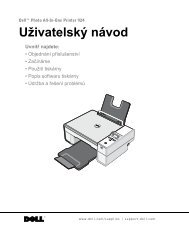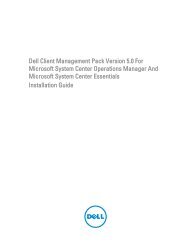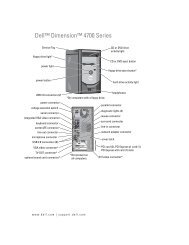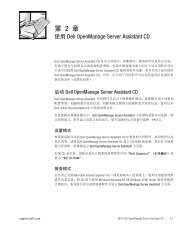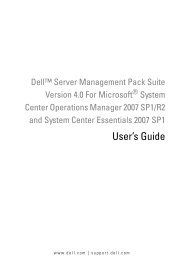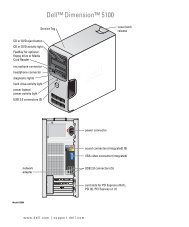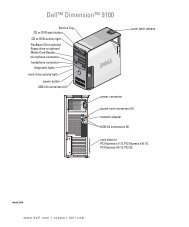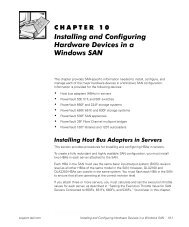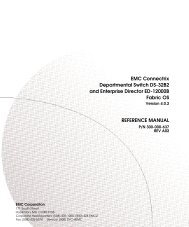VMware vSphere 5 On Dell PowerEdge Systems ... - Dell Support
VMware vSphere 5 On Dell PowerEdge Systems ... - Dell Support
VMware vSphere 5 On Dell PowerEdge Systems ... - Dell Support
Create successful ePaper yourself
Turn your PDF publications into a flip-book with our unique Google optimized e-Paper software.
Figure 4. Configuring <strong>vSphere</strong> With iSCSI SAN<br />
Booting ESXi<br />
This section describes how to perform the basic setup of your system based on the following assumptions:<br />
• You have already connected a keyboard, monitor, and mouse.<br />
• You have connected the first onboard NIC to your management network.<br />
• Ensure that the infrastructure between the two systems is working correctly prior to working with your system<br />
and the <strong>VMware</strong> management software.<br />
To set up your system:<br />
1. Turn on your system.<br />
2. Press at boot and select the internal storage device as the one-time boot device located under Hard Drives<br />
in the menu.<br />
22<br />
NOTE: If you ordered ESXi as the primary operating system, the boot order of the system is already set to boot<br />
from ESXi.<br />
NOTE: If you ordered ESXi as an included hypervisor, with zero years of technical support service and did not<br />
request a hard-disk based operating system, your system may boot to a No Operating System Found message.<br />
Set the system boot order to make the storage device containing ESXi (USB or SD card) as the first boot<br />
device.<br />
In the first phase of booting, the compressed ESXi modules are loaded into memory and a progress bar is displayed.<br />
In the second phase, the modules are expanded and executed from memory. As the modules load, the DCUI briefly<br />
displays the module names on the screen.<br />
After all ESXi modules have expanded and executed, the system is ready to begin servicing workloads as illustrated<br />
in the figure below. If there is a Dynamic Host Configuration Protocol (DHCP) system or DHCP proxy configured on<br />
your network subnet, ESXi displays the address acquired by the DHCP system.




